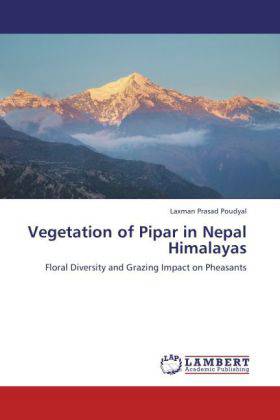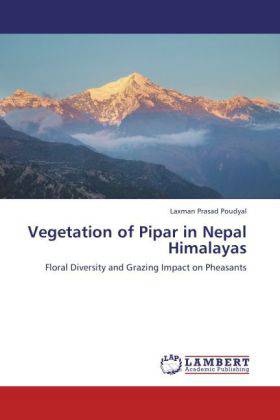
Door een staking bij bpost kan je online bestelling op dit moment iets langer onderweg zijn dan voorzien. Dringend iets nodig? Onze winkels ontvangen jou met open armen!
- Afhalen na 1 uur in een winkel met voorraad
- Gratis thuislevering in België vanaf € 30
- Ruim aanbod met 7 miljoen producten
Door een staking bij bpost kan je online bestelling op dit moment iets langer onderweg zijn dan voorzien. Dringend iets nodig? Onze winkels ontvangen jou met open armen!
- Afhalen na 1 uur in een winkel met voorraad
- Gratis thuislevering in België vanaf € 30
- Ruim aanbod met 7 miljoen producten
Zoeken
Vegetation of Pipar in Nepal Himalayas
Floral Diversity and Grazing Impact on Pheasants
Laxman Prasad Poudyal
Paperback | Engels
€ 48,45
+ 96 punten
Omschrijving
Pipar is a flagship area for Himalayan pheasant conservation, supporting five Himalayan pheasant species. It lies on the western slope of Seti River Valley in the Annapurna Region of the Central Himalaya. The area was first recognized as an exceptionally rich one for pheasants in 1977 and has been the site for a long-term project by the World Pheasant Association since, being popularly known as the 'Pipar Pheasant Reserve'. Ecological studies on pheasants began in the seventies and these were followed by other surveys on pheasants, avifaunal diversity and general ecology. This monograph provides a summary of plant species observed in the Pipar Bowl and effects of nomadic grazing in the area. Disturbances to the wildlife and their being killed by herdsmen and their dogs, undesired fires, deforestation and haphazard harvesting of medicinal plants are the major threats. The people living adjacent utilize the land of Pipar for livestock grazing and collecting fodder, fuel wood, timber, bamboo and medicinal plants. They consider that grazing in the area is their customary right.
Specificaties
Betrokkenen
- Auteur(s):
- Uitgeverij:
Inhoud
- Aantal bladzijden:
- 68
- Taal:
- Engels
Eigenschappen
- Productcode (EAN):
- 9783845471099
- Verschijningsdatum:
- 21/10/2011
- Uitvoering:
- Paperback
- Formaat:
- Trade paperback (VS)
- Afmetingen:
- 152 mm x 229 mm
- Gewicht:
- 113 g

Alleen bij Standaard Boekhandel
+ 96 punten op je klantenkaart van Standaard Boekhandel
Beoordelingen
We publiceren alleen reviews die voldoen aan de voorwaarden voor reviews. Bekijk onze voorwaarden voor reviews.











